Horse Sculpture in China Cultural and Artistic Values
In Chinese culture, the horse is a powerful symbol. It represents talent, strength, speed, and freedom. The term “thousand-mile horse” is often used to describe someone with exceptional abilities, highlighting the importance placed on skilled individuals in Chinese society.
Symbolism of the Horse
Horses symbolize strength, speed, and freedom. For example, the imagery of a horse stepping on a flying swallow (“Horse Treading on a Flying Swallow”) conveys agility and power, while the phrase “heavenly horse roaming freely” reflects an untamed, independent spirit. These ideas have been deeply embedded in Chinese sculpture, making horse sculptures rich with cultural meaning.
-

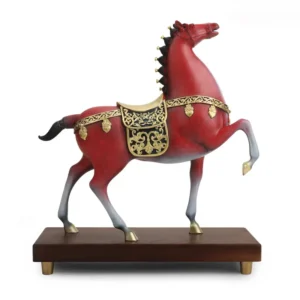 Product on saleTANG HORSE POSITION brass sculptureOriginal price was: $480.00.$420.00Current price is: $420.00.
Product on saleTANG HORSE POSITION brass sculptureOriginal price was: $480.00.$420.00Current price is: $420.00. -
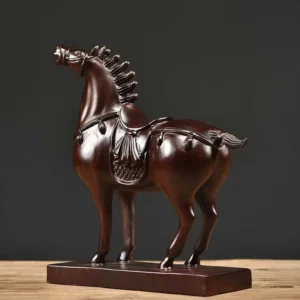
 Product on saleWooden Carved Horse Ornament EbonyOriginal price was: $480.00.$420.00Current price is: $420.00.
Product on saleWooden Carved Horse Ornament EbonyOriginal price was: $480.00.$420.00Current price is: $420.00. -
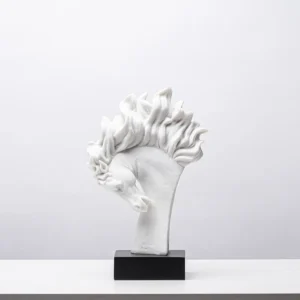
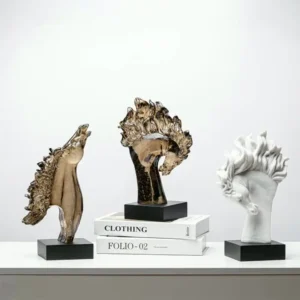 Product on saleResin + sandstone stone horse head ornament sculpture craftsOriginal price was: $60.00.$55.00Current price is: $55.00.
Product on saleResin + sandstone stone horse head ornament sculpture craftsOriginal price was: $60.00.$55.00Current price is: $55.00. -
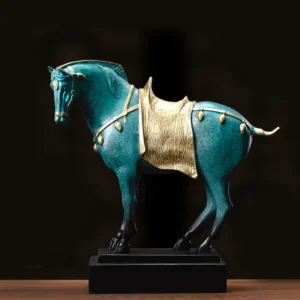
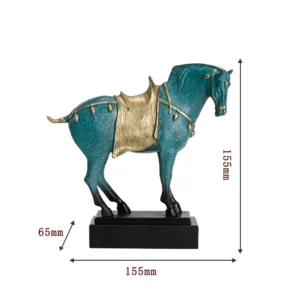 Product on saleTang Sancai Cast Bronze Sculpture CraftsOriginal price was: $350.00.$320.00Current price is: $320.00.
Product on saleTang Sancai Cast Bronze Sculpture CraftsOriginal price was: $350.00.$320.00Current price is: $320.00. -
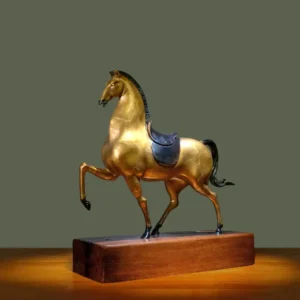
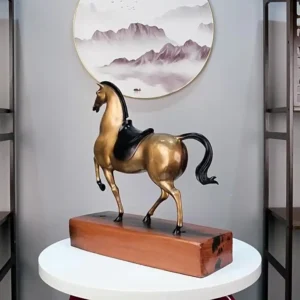 Product on saleBronze Horse Sculpture CraftsOriginal price was: $380.00.$350.00Current price is: $350.00.
Product on saleBronze Horse Sculpture CraftsOriginal price was: $380.00.$350.00Current price is: $350.00. -
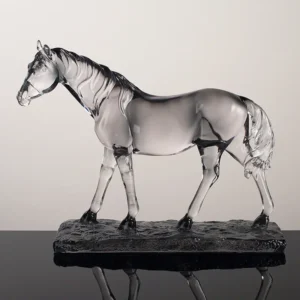
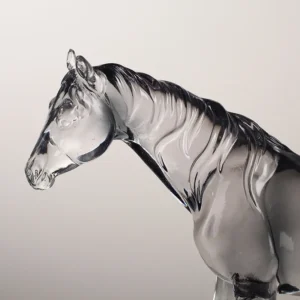 Product on saleScandinavian Resin Crafts Horse StatueOriginal price was: $85.00.$65.00Current price is: $65.00.
Product on saleScandinavian Resin Crafts Horse StatueOriginal price was: $85.00.$65.00Current price is: $65.00. -
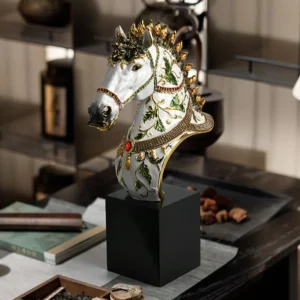
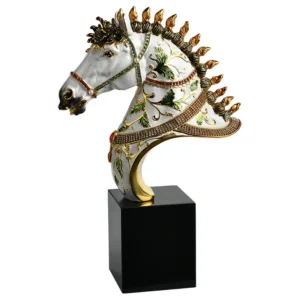 Product on saleResin Enamel Horse SculptureOriginal price was: $250.00.$230.00Current price is: $230.00.
Product on saleResin Enamel Horse SculptureOriginal price was: $250.00.$230.00Current price is: $230.00. -
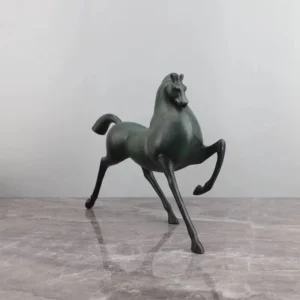
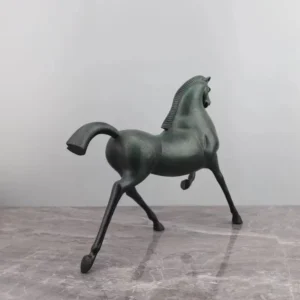 Product on saleBronze Animal Horse SculptureOriginal price was: $200.00.$180.00Current price is: $180.00.
Product on saleBronze Animal Horse SculptureOriginal price was: $200.00.$180.00Current price is: $180.00. -
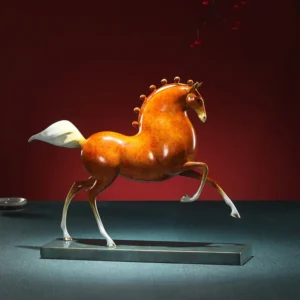
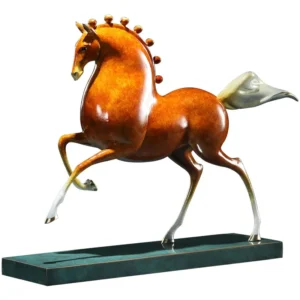 Product on saleTang Horse Sculpture CraftsOriginal price was: $1,850.00.$1,600.00Current price is: $1,600.00.
Product on saleTang Horse Sculpture CraftsOriginal price was: $1,850.00.$1,600.00Current price is: $1,600.00.
Political Significance
Horse sculptures also served political purposes throughout Chinese history. One famous example is the stone carving in front of the tomb of General Huo Qubing from the Han dynasty, which shows a horse trampling an enemy. This artwork symbolized victory over the Xiongnu and conveyed a strong sense of national pride and resilience.
Rulers across various dynasties used the image of the horse to express authority and strength. For instance, a portrait of Emperor Xuanzong of the Ming dynasty on horseback emphasized his powerful and heroic image. In this way, horse sculptures became more than just artistic expressions—they became tools of political messaging and symbols of social order.
Aesthetic Value
Horses have always captured the imagination of artists for their beauty and energy. The elegant shape and dynamic movement of the horse have been subjects of creative exploration across centuries. Different time periods reflected different aesthetic values in horse sculptures. For example, modern artist Xu Beihong’s paintings of galloping horses are known for their expressive brushwork and vivid energy. His technique, which used bold strokes and contrasts in ink, helped bring the horse’s vitality to life. These same qualities can be seen in various horse sculptures throughout history.
Evolution of Artistic Style
Each historical period brought its own unique artistic style to horse sculptures:
- Pre-Qin (before 221 BCE): Horse images were simple and symbolic, often carved in jade or cast into bronze.
- Qin Dynasty: The terracotta horses found in Emperor Qin Shi Huang’s tomb were lifelike and proportional, reflecting the empire’s military strength.
- Han Dynasty: Sculptures like “Horse Treading on a Flying Swallow” displayed dramatic motion and imaginative forms, capturing a spirit of ambition and conquest.
- Tang Dynasty: These works were detailed and elegant, representing the prosperity and openness of the time.
- Song Dynasty: Sculptures became more delicate and naturalistic, with refined lines and a focus on gentle beauty.
- Yuan Dynasty: Influenced by Tibetan and Nepalese art, horse sculptures took on more religious themes and complex forms.
- Ming and Qing Dynasties: Sculptors focused on realistic depictions and cultural richness, blending tradition with creativity.
- Modern Era: Horse sculptures diversified with new materials and styles. Contemporary artists combine traditional techniques with modern artistic concepts.
Reasons for Style Evolution
The evolution of horse sculpture styles is influenced by several factors:
- Political Shifts: Changing dynasties brought new ideologies and values, reflected in the art of the time.
- Economic and Cultural Exchange: Periods of wealth and openness, like the Tang Dynasty, encouraged artistic development and international influence.
- Technological Advances: New tools and materials expanded the ways artists could create and express their visions.
Techniques and Materials
Each era used different methods to create horse sculptures:
- Pre-Qin: Early pieces were mostly jade carvings or bronze decorations, simple but symbolic.
- Qin and Han Dynasties: Techniques included mold casting and detailed carving. The terracotta horses were mass-produced with molds, then hand-finished.
- Tang Dynasty: The famous Tang Sancai technique used colorful glaze on clay figures, making the horses appear vivid and full of life.
- Song Dynasty: Sculptors used wood and stone, emphasizing smooth lines and elegant curves.
- Ming and Qing Dynasties: Sculptures from this era often included tomb figurines and decorative ceramics, showing both craftsmanship and symbolism.
- Modern Period: Artists like Tian Yueming use a mix of traditional handcraft and modern techniques, resulting in dynamic and expressive works.
Influence of Craftsmanship on Style
The materials and techniques used often dictated the artistic outcome. For example, early jade carvings were flat and simple due to the hardness of the stone. Later, clay and bronze allowed for more detailed and realistic portrayals. Colorful glazes in the Tang era added visual excitement, while wood carving in the Song era allowed for smooth, elegant forms. Each method contributed to the unique aesthetic of the time.
Representative Works Through History
Many iconic horse sculptures illustrate the history and culture of their time:
- Pre-Qin: Jade horses and bronze designs represent early beliefs and rituals.
- Qin Dynasty: Terracotta horses from the emperor’s tomb display military realism and craftsmanship.
- Han Dynasty: The bronze “Horse Treading on a Flying Swallow” and the “Horse Crushing a Xiongnu” stone sculpture both reflect national pride and strength.
- Tang Dynasty: Tang Sancai horses stand out with their vivid colors and graceful forms.
- Song Dynasty: Wooden horses show a high level of skill and a focus on natural beauty.
- Yuan Dynasty: Relief carvings on Buddhist monuments display strong religious themes and dramatic expression.
- Ming and Qing Dynasties: A variety of tomb sculptures and the “Hundred Horses” painting by Giuseppe Castiglione (Lang Shining) blend traditional Chinese and Western styles.
- Modern Era: Sculptures by artists like Tian Yueming show how the horse remains a powerful subject in contemporary Chinese art.
Artistic and Historical Importance
These sculptures do more than reflect artistic skill—they tell the story of a culture. From religious rituals and political power to economic growth and artistic innovation, horse sculptures offer a unique lens into Chinese history. They bridge tradition and modernity, providing valuable insight into how Chinese society has evolved over thousands of years.

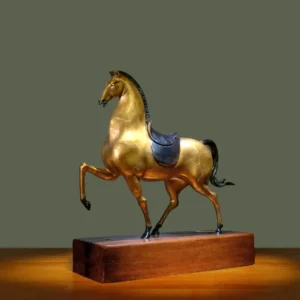 Bronze Horse Sculpture Crafts
Bronze Horse Sculpture Crafts